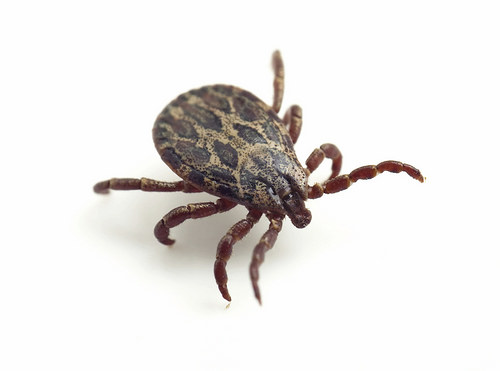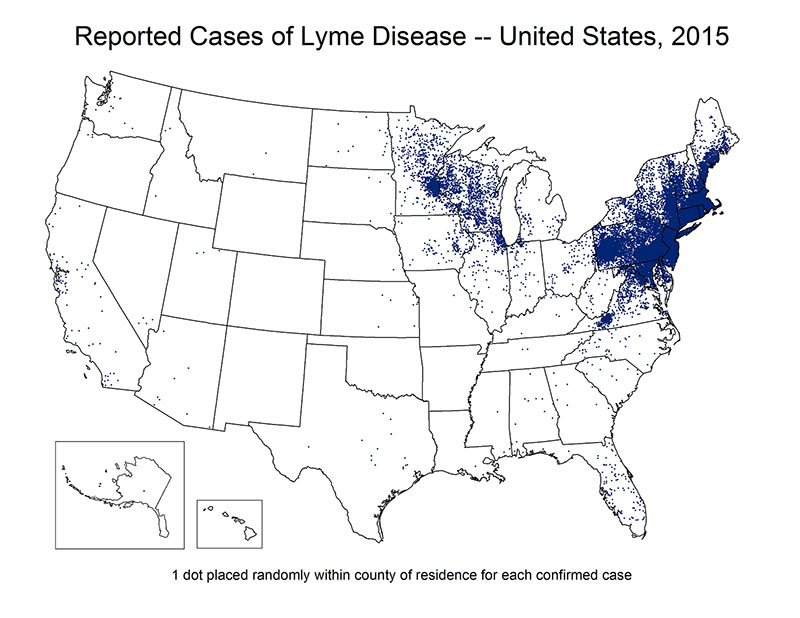
Paul Johnson is the Founder of The Tick and Mosquito Project and contacted me about a month ago with an offer to share one of his articles on a subject that could be of great value to those of us who love to tramp in the out-of-doors. Lions, tigers and bears may frighten us, but the lowly deer tick can cause tremendous harm to our bodies. Read on and take good care!
Sometimes, the most dangerous animal on the hiking trail is much smaller than you might assume. For all the exaggerated stories of coyote encounters, bear attacks, or cougar sightings, it just might be that the creature you need to be most afraid of is a tiny tick.
Ticks transmit diseases in their bites, and the most common tick-borne illness is probably Lyme disease which afflicts at least 30,000 people each year in the USA alone. The deer tick (which transmits Lyme disease) is a determined little creature whose range is growing by the year. The deer tick is synonymous with the blacklegged tick. While deer ticks are expanding their range each year, they tend to be most abundant in the Northeast and Great Lakes regions.
Take a few steps to be sure you are steering clear of ticks on the hiking trail or at the campsite. Here are some things you can do.
Use Repellent
A good tick repellent or combination of repellents can do wonders in the effort to keep ticks away from you. While many of us are not fans of using man-made repellents, a combination of DEET and permethrin has been shown to repel ticks as well as anything. DEET is used on your skin (and it obviously repels mosquitoes too) and permethrin is applied to footwear and clothing.
When we hike and use this combination, we tend to experience a major reduction in ticks — probably an 80% decrease, although we have never scientifically measured it.
There are some suggestions of essential oil and more natural concoctions for repelling ticks as well, and some initial studies find that nootkatone, geraniol, and rosemary might be effective to some extent against ticks. While we certainly like the notion of natural, essential oil repellents, we also say use them with caution. Lyme disease is not something to flirt with, and if you for sure, positively are going to be hiking in an area known for Lyme-carrying deer ticks, go with the proven DEET and permethrin combo.

Beware of Long Grass and Brush
Ticks typically live in areas with plenty of cover. They prefer long grass to dirt or short grass, and some of their favorite habitat tends to be a brush pile or leaf pile. As you are spending time exploring outside, you will be less likely to encounter ticks if you stay on the trail and out of the longer grass.
For those who might be getting their kids outdoors, be sure to help them check for ticks. Kids don’t always have the same thoroughness that adults have, so it is not enough to just tell them to check themselves.
Be sure to look for hotspots — ticks love warmer areas on the body such as the scalp, armpits, and are behind the knees.
If you are in a position where you have no choice but to go off-trail — perhaps are a photographer trying to get that perfect photo — then it is even more important that you use repellents before you go outside.
Check Yourself Regularly
It might seem obvious, but checking yourself for ticks is critical anytime you have been in contact with outdoor areas, long grass, or forests. It is important that you give yourself a thorough inspection, not just a simple eyeballing of your clothing.
Make sure you look over yourself quickly after ending your hike or trip, because there is evidence that the longer a tick is attached, the more likely it is to transmit Lyme disease to you if it is infected.
Monitor Your Pets, Too!
If you are bringing your dog with you on a hike, be sure to help them prevent ticks from hitching a ride on their fur or coat. Because dogs often veer off into longer grass and brush piles, they are likely to come in contact with ticks even if you are trying not to. There are some great tick repellents for dogs (outlined here) that will help your pet keep ticks at bay. That way, your dog is less likely to carry ticks into your car or home when the outdoor time is done.


